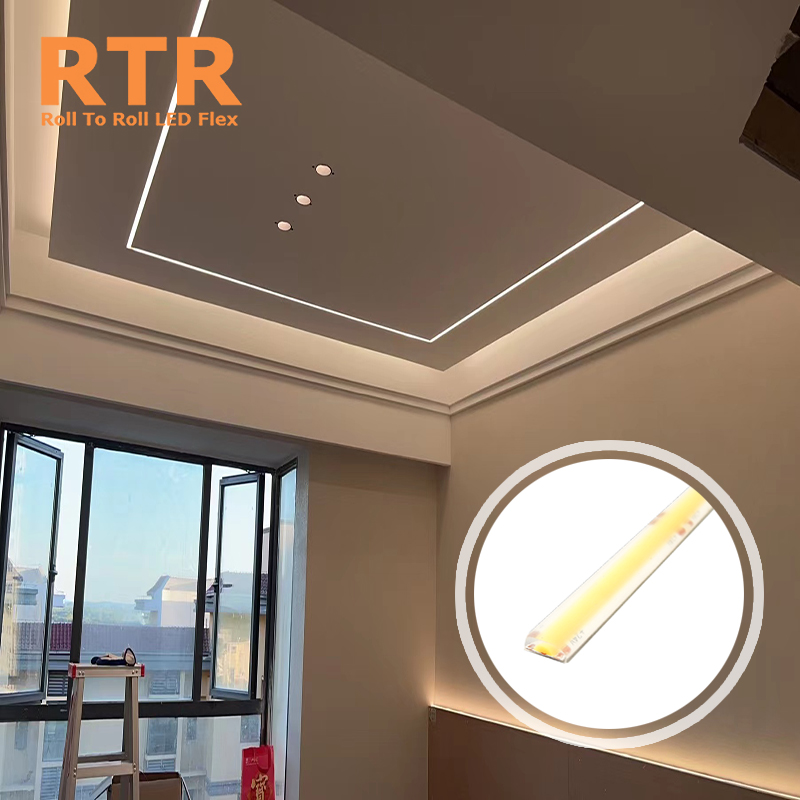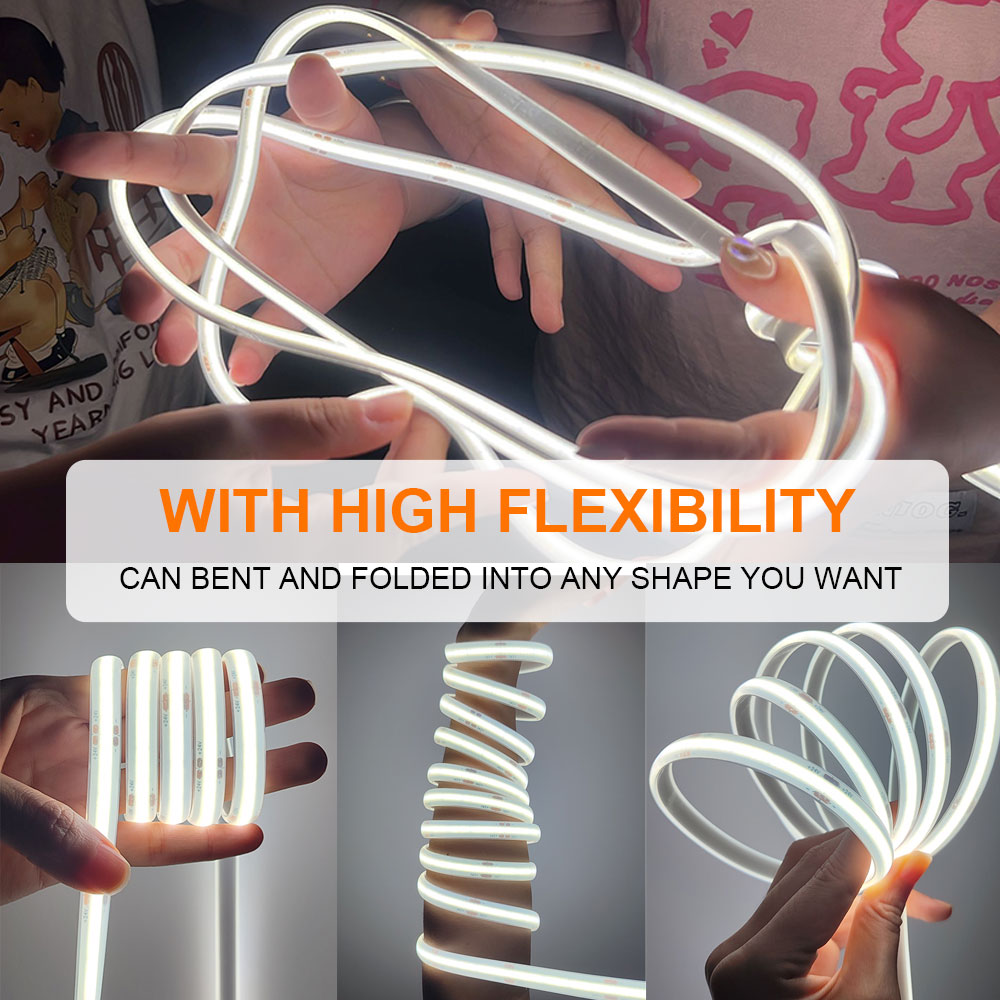Introduction
LED light strips have become increasingly popular for use in both residential and commercial lighting applications. There are many different types of LED light strips available on the market, including traditional 2835 LED light strips and newer silicone extruded COB LED light strips. In this article, we will explore the differences between these two types of LED light strips in terms of their definition, characteristics, usage, advantages, and more.

Definition
Traditional 2835 LED strips are made up of individual surface-mount LEDs that are arranged in a linear pattern on a flexible circuit board. The LEDs are typically spaced apart at regular intervals, and the circuit board is coated with a protective layer of resin to prevent damage from moisture and other environmental factors.
Silicone rubber extruded COB LED light strips, on the other hand, use a different manufacturing process. Rather than individual surface-mount LEDs, COB (chip-on-board) technology is used to create a continuous strip of light-emitting diodes. This strip is then encapsulated in a layer of silicone, which provides both protection and diffusion for the light.
Characteristics
2835 LED strips are bright and efficient, with each LED producing 20-25 lumens of light output. They are also relatively easy to install and can be cut to fit into custom lengths as needed. 2835 LED strips have limitations, including narrow viewing angle and visible “hot spots” among LEDs.
Silicone extruded COB LED strips, on the other hand, are designed to overcome these limitations. Because the LEDs are closely packed together in a continuous strip, there are no visible gaps or hot spots. In addition, the silicone encapsulation helps to diffuse the light more evenly, resulting in a smoother, more consistent illumination. COB technology provides a wider viewing angle, useful in applications requiring light spread over a larger area.
Usage
Both LED light strip types are versatile and used for various lighting applications, such as under-cabinet or accent lighting. They are also commonly used in commercial settings such as retail stores, restaurants, and hotels.
In terms of installation, traditional 2835 LED strips are often mounted using adhesive tape or clips, while silicone extruded COB LED strips may require a more secure mounting system due to their weight and size. Both types of LED strips can be controlled using a variety of dimming and color-changing options, depending on the specific needs of the application.

Advantages
The main advantage of 2835 LED strips is their high brightness and efficiency for applications requiring high light output. They are also relatively affordable and widely available from a range of manufacturers.
Silicone rubber extruded COB LED strips, on the other hand, offer a number of advantages over traditional 2835 LED strips. COB LED strips offer even illumination, wider viewing angle, and durable silicone encapsulation. COB technology also allows for a higher density of LEDs, resulting in a brighter and more efficient light source overall.

Conclusion
When it comes to choosing between traditional 2835 LED strips and silicone extruded COB LED strips, there are a number of factors to consider. Both LED light strip types have unique advantages, and the choice depends on the specific application’s needs. Whether you are looking for a high-brightness, efficient light source or a more even and consistent illumination, there is an LED light strip out there that can meet your needs.
